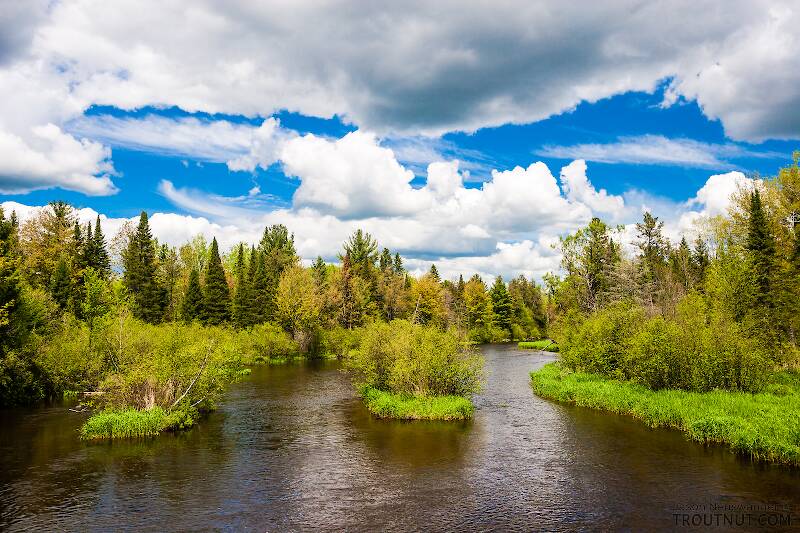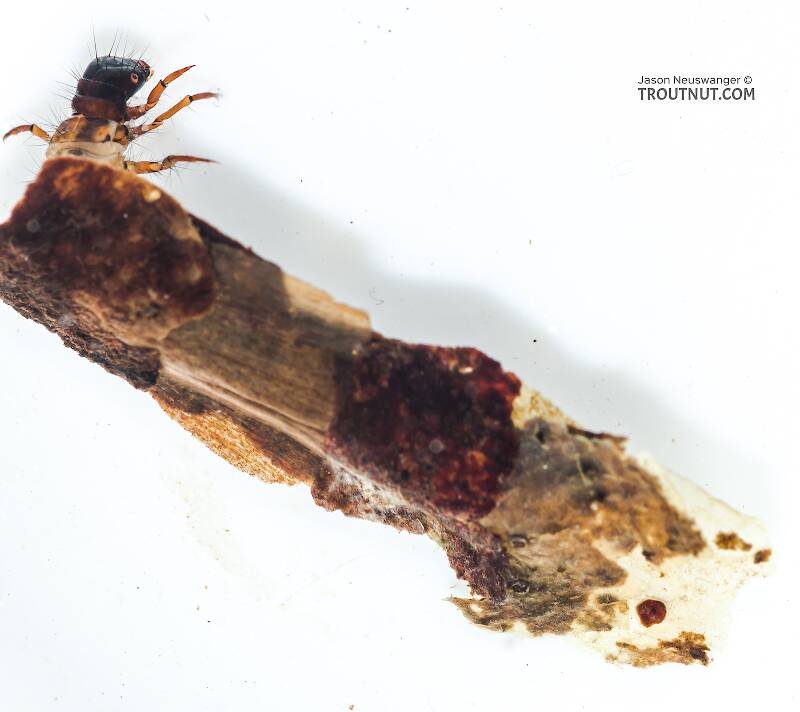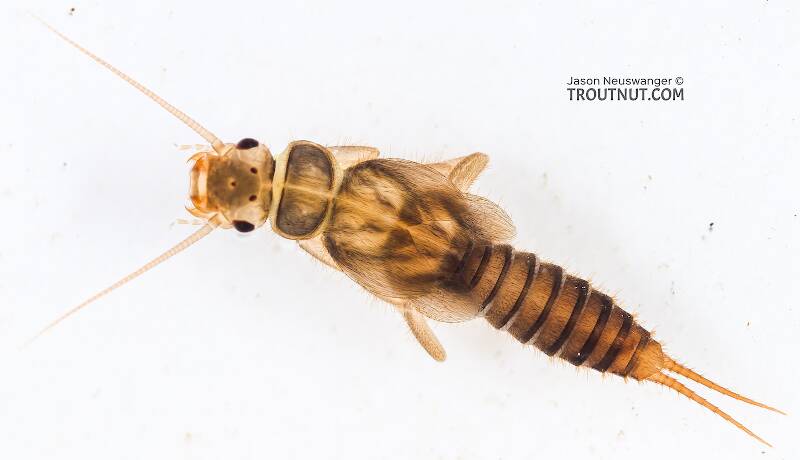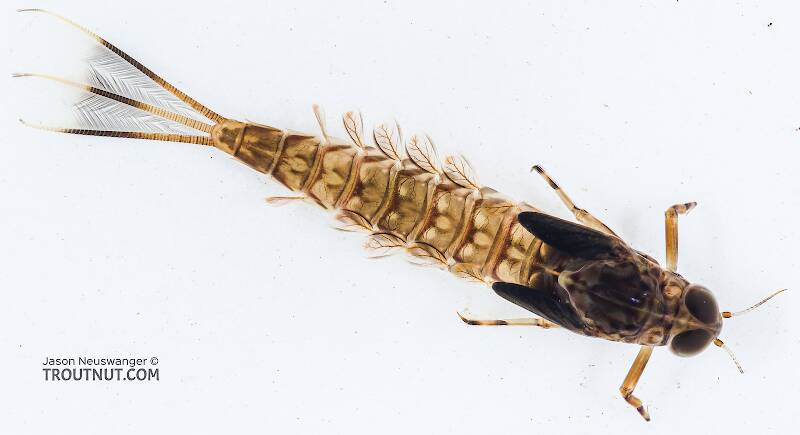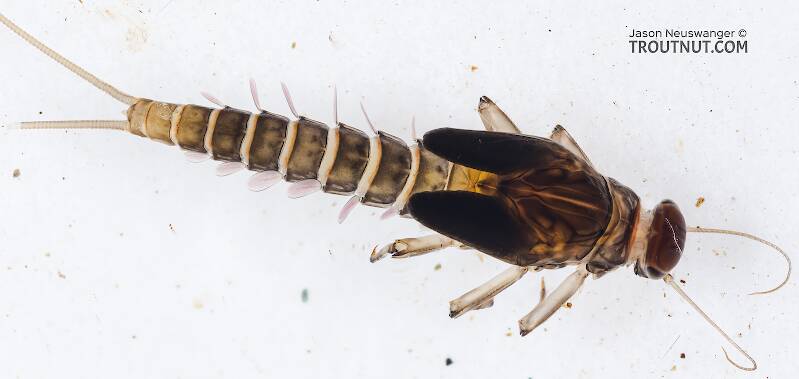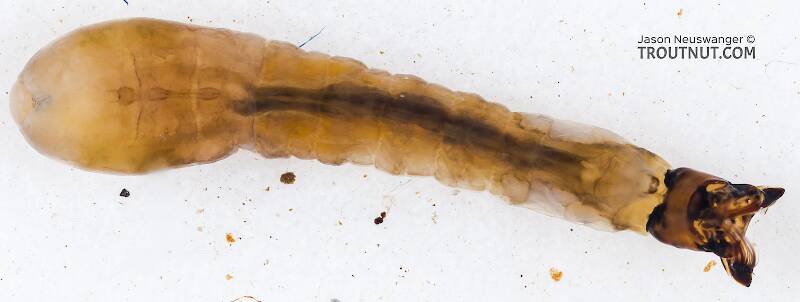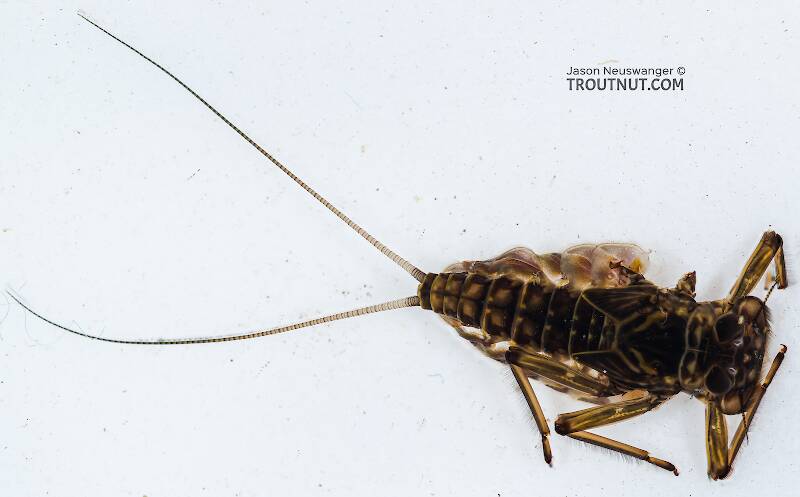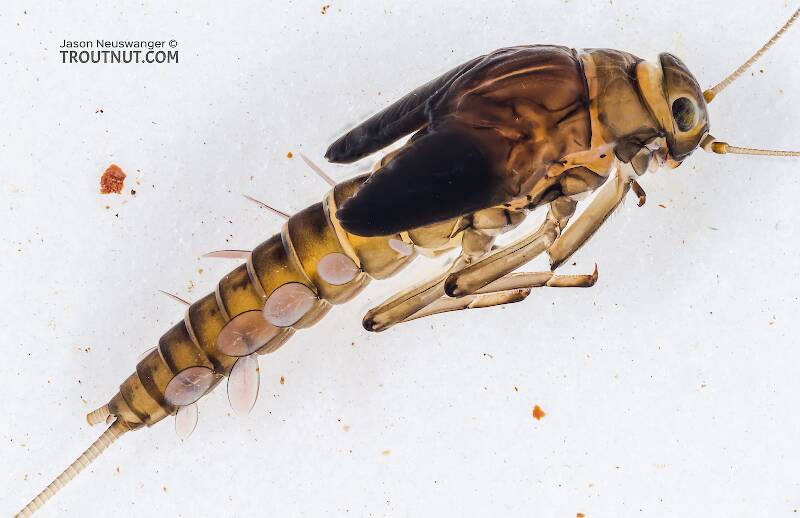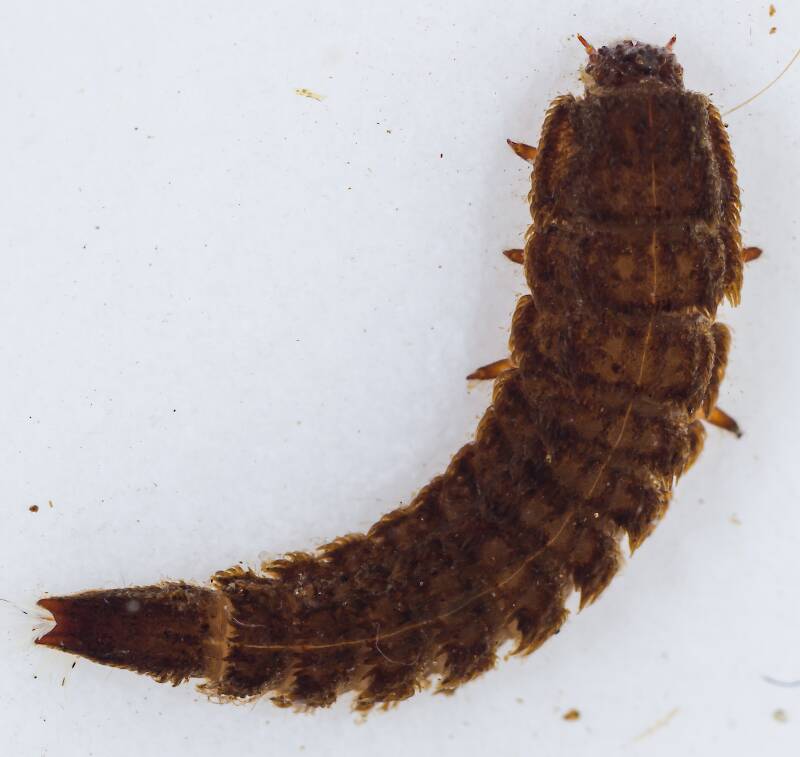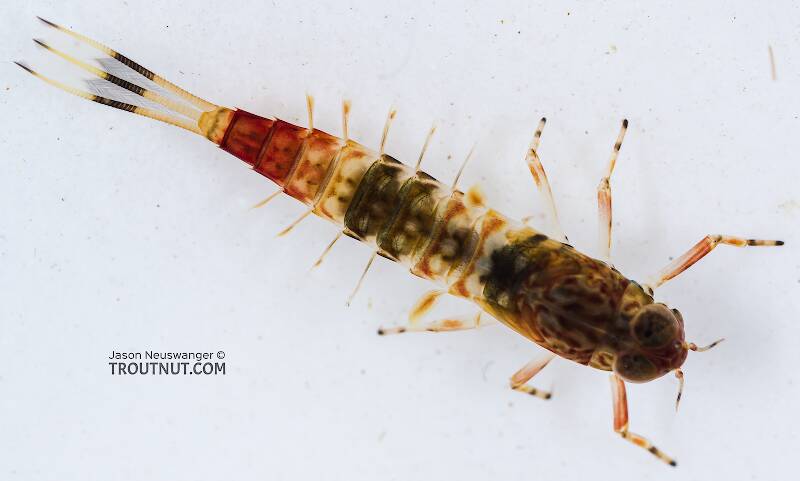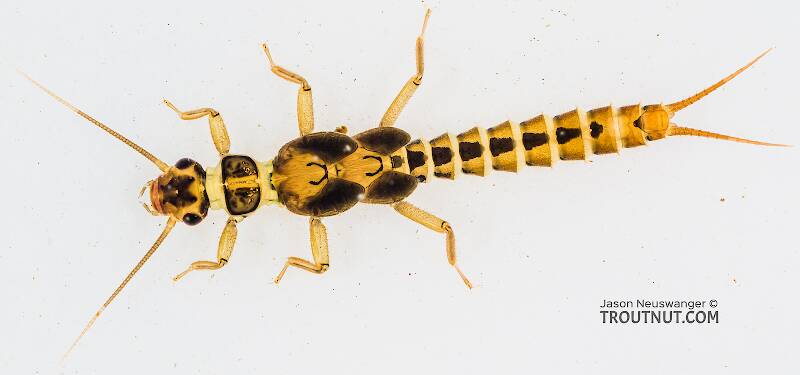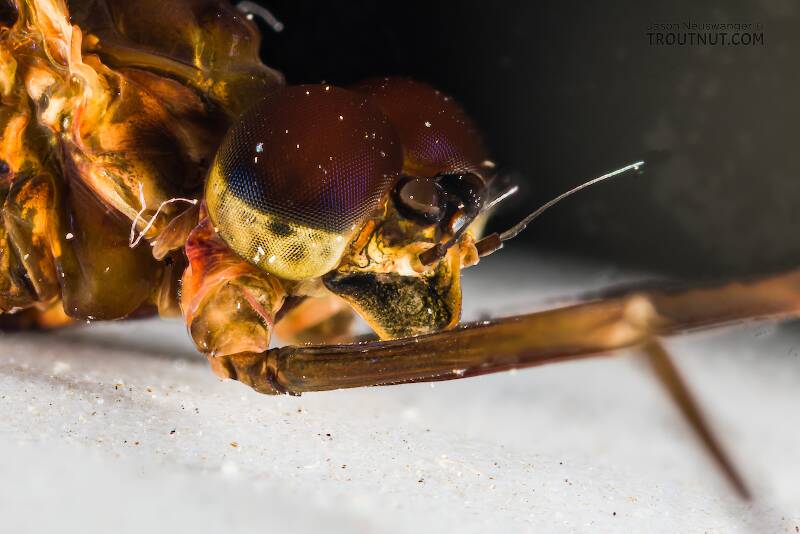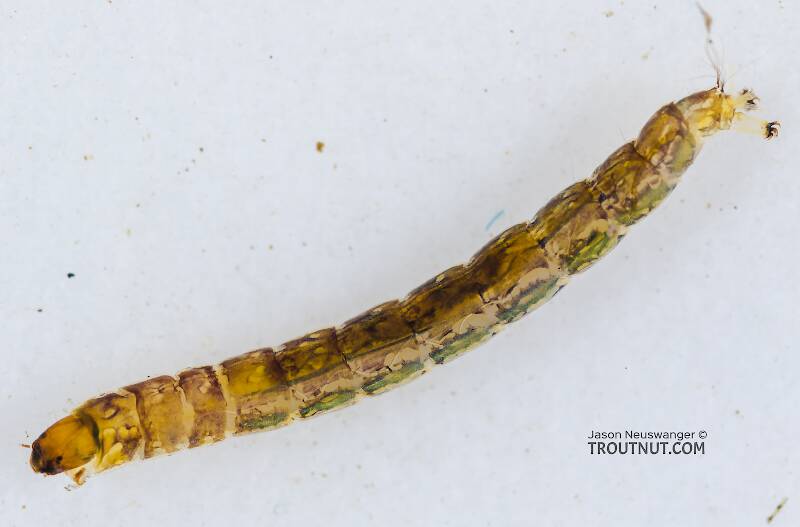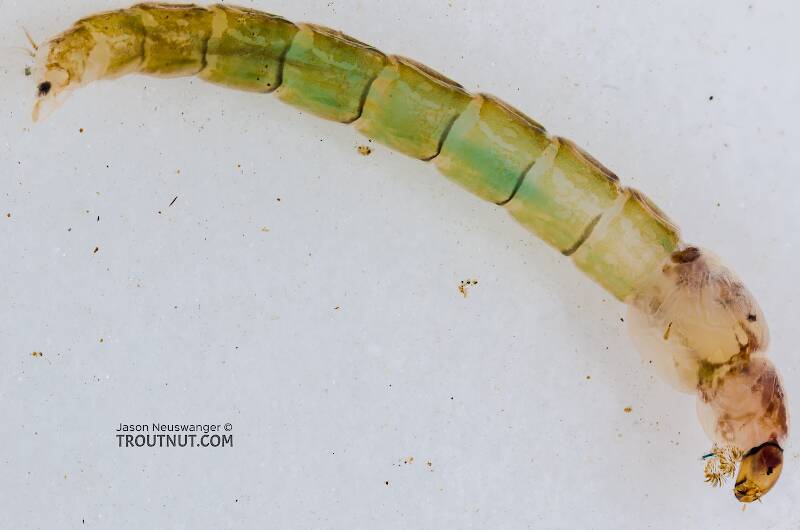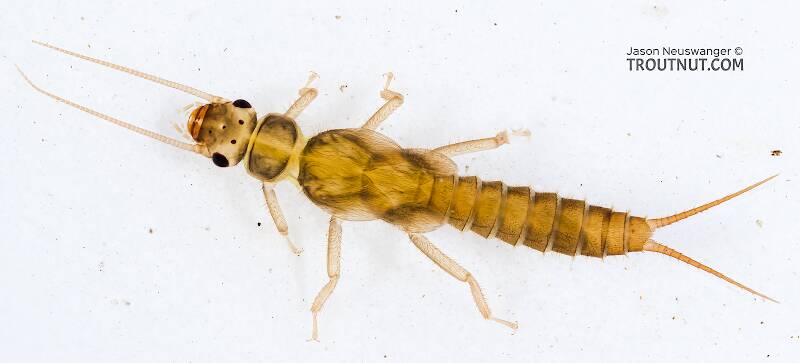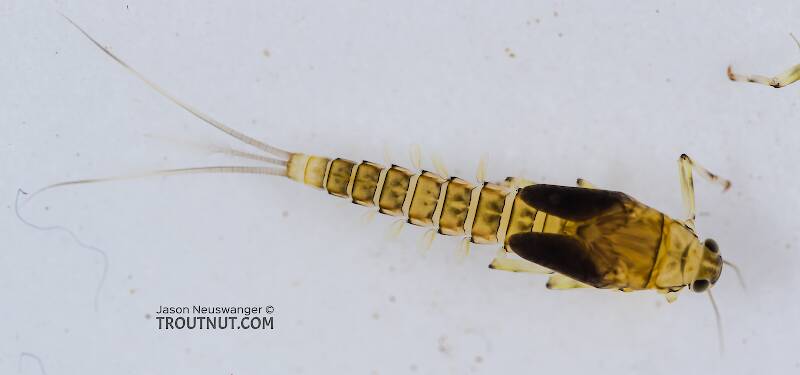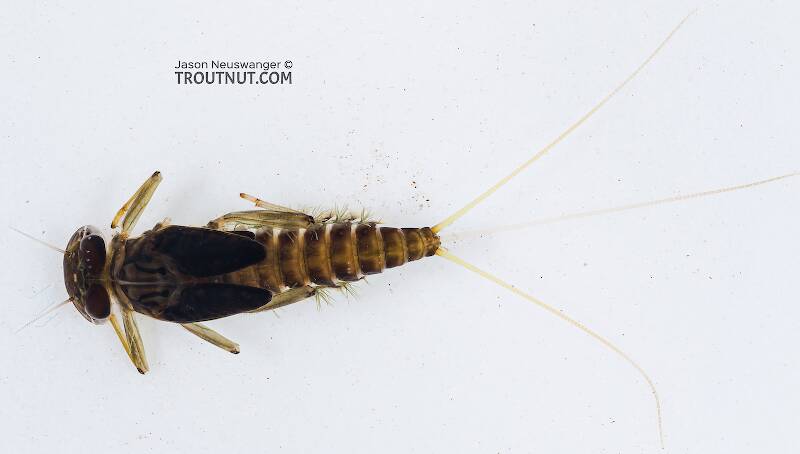
Blue-winged Olives
Baetis
Tiny Baetis mayflies are perhaps the most commonly encountered and imitated by anglers on all American trout streams due to their great abundance, widespread distribution, and trout-friendly emergence habits.
Featured on the forum

As far as I can tell, this species has only previously been reported from one site in Oregon along the Columbia gorge. However, the key characteristics are fairly unmistakable in all except for one minor detail:
— 4 small yellow spots on frons visible in photos
— Narrow occipital spinule row curves forward (but doesn’t quite meet on stem of ecdysial suture, as it's supposed to in this species)
— Short spinules on anterior margin of front legs
— Short rposterior row of blunt spinules on abdominal tergae, rather than elongated spinules dorsally
I caught several of these mature nymphs in the fishless, tiny headwaters of a creek high in the Wenatchee Mountains.
— 4 small yellow spots on frons visible in photos
— Narrow occipital spinule row curves forward (but doesn’t quite meet on stem of ecdysial suture, as it's supposed to in this species)
— Short spinules on anterior margin of front legs
— Short rposterior row of blunt spinules on abdominal tergae, rather than elongated spinules dorsally
I caught several of these mature nymphs in the fishless, tiny headwaters of a creek high in the Wenatchee Mountains.

Troutnut is a project started in 2003 by salmonid ecologist Jason "Troutnut" Neuswanger to help anglers and
fly tyers unabashedly embrace the entomological side of the sport. Learn more about Troutnut or
support the project for an enhanced experience here.
A little quick bug collecting in the Cascades during runoff
By Troutnut on June 2nd, 2022
I was in the area of the Icicle River on June 3, so I toured the scenery and admired the power of the river ripping down through the mountains as snowmelt peaks in the high country. I wanted to try some new photography gadgets, so I collected a few nymphs from the river and a tiny, probably fishless tributary called Chatter Creek. It took a long time just to find somewhere I could safely step onto gravel in the river to sample, and the creek that is probably ankle-deep most times was waist deep.
Photos by Troutnut from the Icicle River and Chatter Creek in Washington

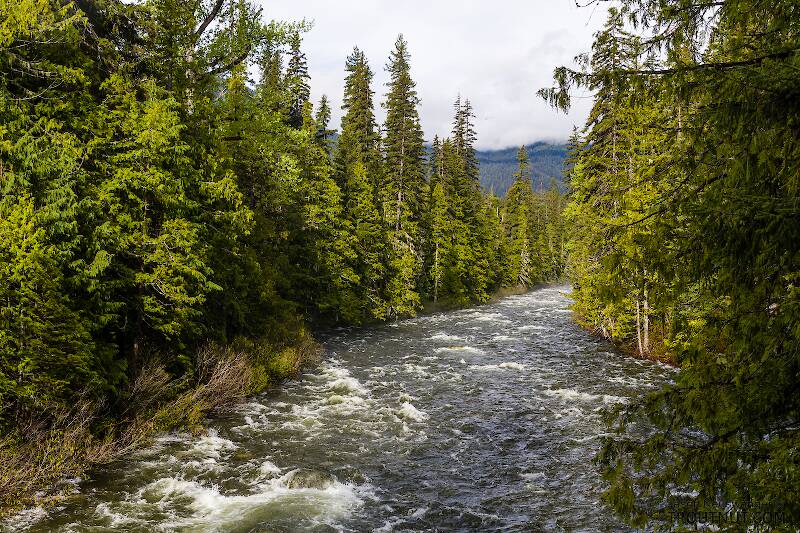
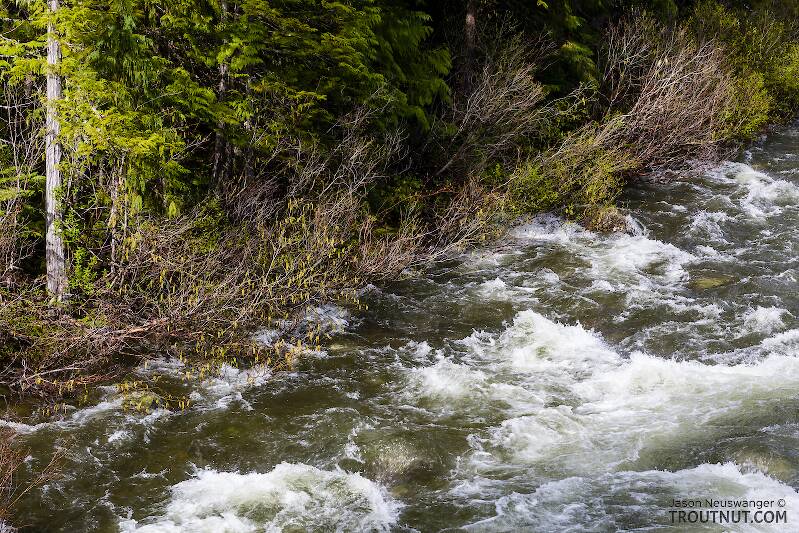
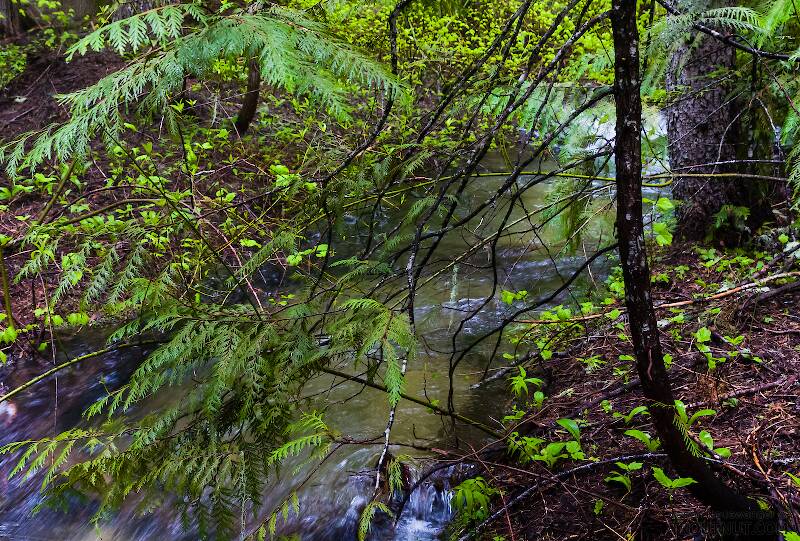
Closeup insects by Troutnut from the Icicle River and Chatter Creek in Washington
First trout of 2022
By Troutnut on May 30th, 2022
It's been a busy winter and spring with work, and runoff makes fishing in the central Cascades less appealing until the water comes down and warms up later in the year. However, I was itching to feel the first trout of the year on the end of my line, so I briefly visited a nearby lowland creek to play with a few eager little rainbows and collect some bugs.
Photos by Troutnut from Mystery Creek #295 in Washington
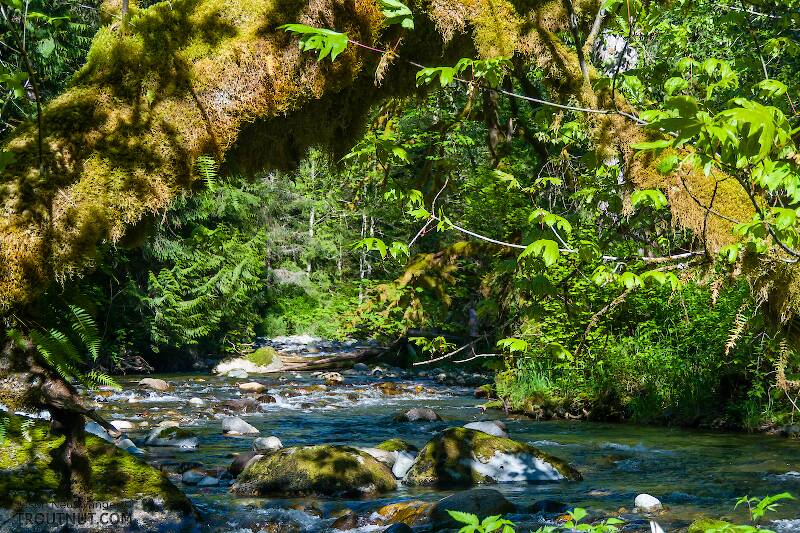
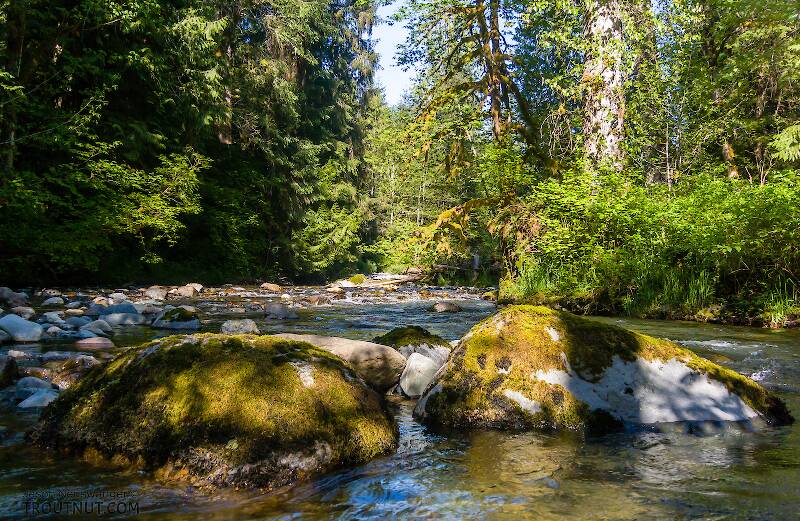
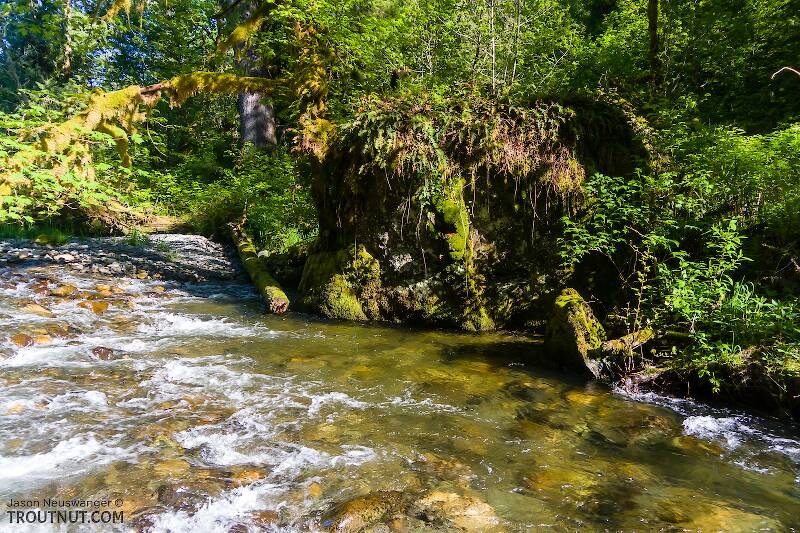
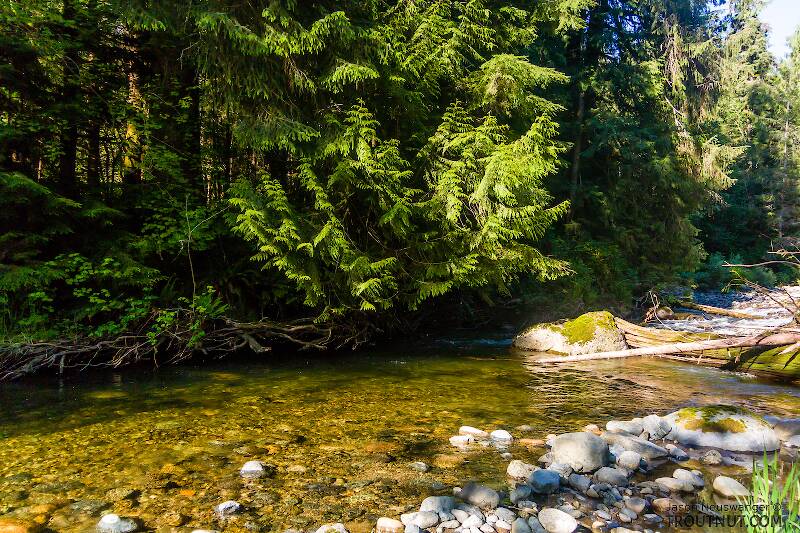
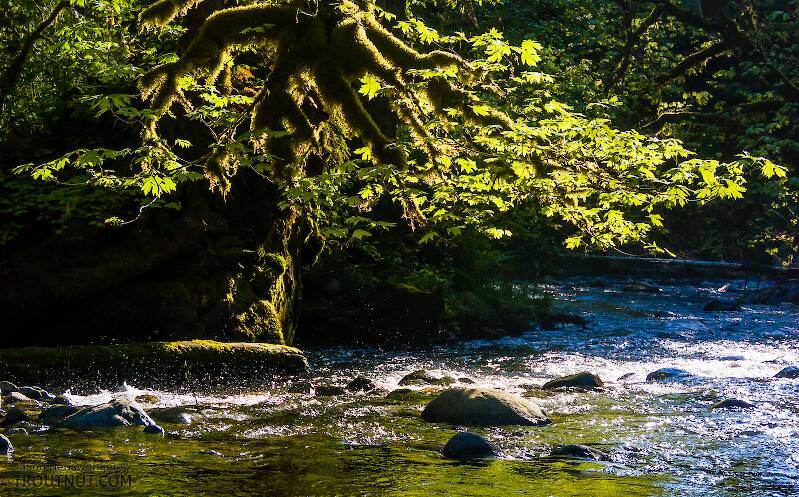
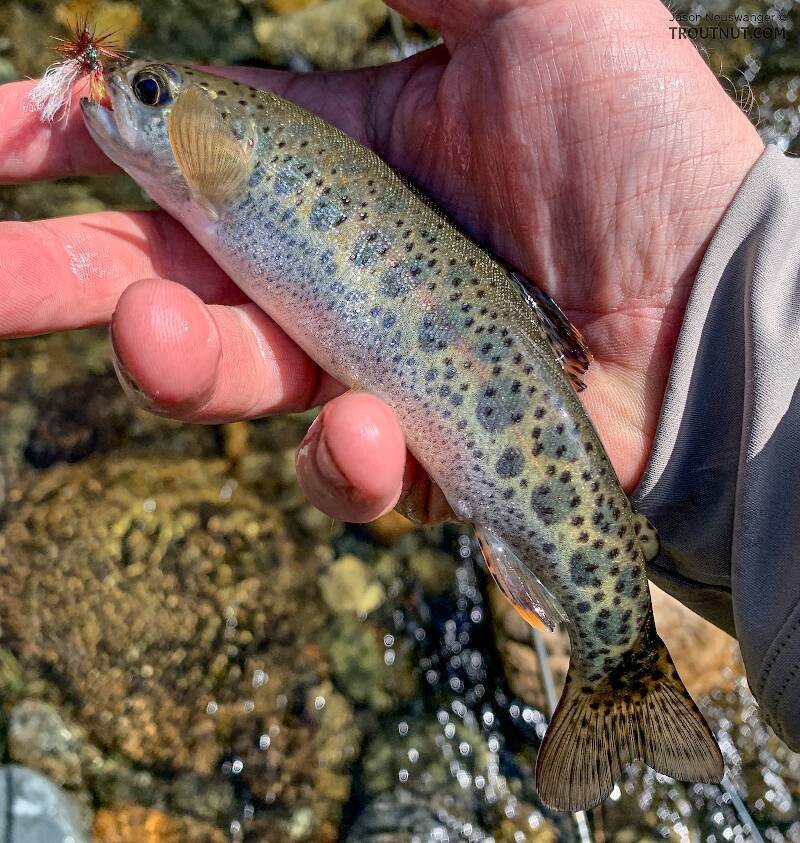
Closeup insects by Troutnut from Mystery Creek #295 in Washington
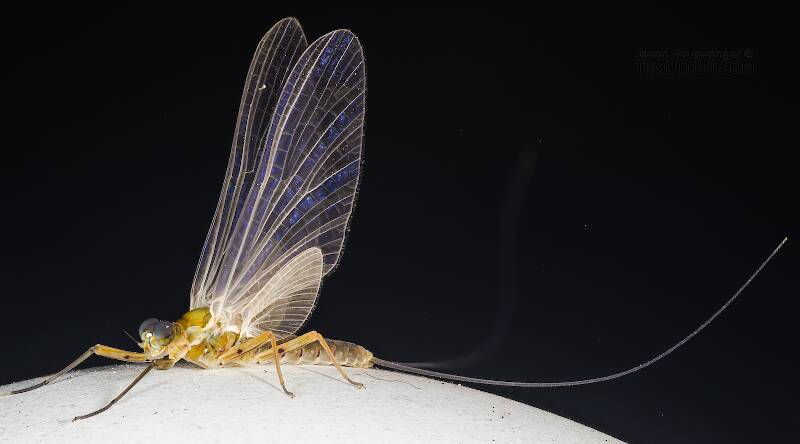
Identification of this one was as follows. Body 9 mm, wing 11 mm.
Both Epeorus albertae and Epeorus dulciana should have a conspicuously darkened humeral crossvein in the forewing. This one doesn't.
The foretarsal claws are dissimilar (one sharp, one blunt), which also rules out the Epeorus albertae group.
The dark macula on the forefemora rules out Epeorus deceptivus, which is also supposed to be a little bit smaller.
Both Epeorus grandis and Epeorus permagnus should be much, much larger.
Of the species known to be present in Washington, this leaves only Epeorus longimanus, which is exactly the right size. The key to male spinners in Traver (1935) describes distinctive markings that are visible (although more faintly) in this dun: “Black posterior margins of tergites do not extend laterally to pleural fold, but an oblique black line form this margin cuts across poster-lateral triangle to pleural fold.”
Both Epeorus albertae and Epeorus dulciana should have a conspicuously darkened humeral crossvein in the forewing. This one doesn't.
The foretarsal claws are dissimilar (one sharp, one blunt), which also rules out the Epeorus albertae group.
The dark macula on the forefemora rules out Epeorus deceptivus, which is also supposed to be a little bit smaller.
Both Epeorus grandis and Epeorus permagnus should be much, much larger.
Of the species known to be present in Washington, this leaves only Epeorus longimanus, which is exactly the right size. The key to male spinners in Traver (1935) describes distinctive markings that are visible (although more faintly) in this dun: “Black posterior margins of tergites do not extend laterally to pleural fold, but an oblique black line form this margin cuts across poster-lateral triangle to pleural fold.”
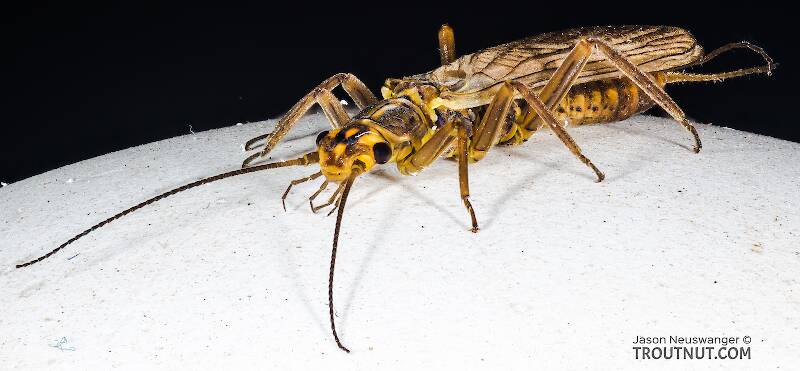
Family-level ID following Merritt, Cummins, & Berg 5th Edition:
1. Thoracic gill remnants absent
2. Arms of mesosternal Y-ridge approach posterior end of furcal pits
3. Submental gill remnants short, obscure, or absent
4. Male. Note that sternum 9 (the long, dark, last segment) appears to be the 8th if you count from the front in the ventral view, because the first segment is not easily visible ventrally.
5. Male abdominal tergum 10 not divided posteriorly; Paraprocts modified as hooks.
6. Male abdominal tergum 10 simple without notches or other prominent processes. This one was tricky, because at first glance it looks like the hooks arise from tergum 10, but in fact they're coming from the paraprocts underneath. There's a medial groove on tergum 10 that could be seen as a "notch" too, but it seems by "notch" the key is referring to a notch in the margin.
7. Abdominal sternum 8 with a conspicuous lobe and sternum 7 without such a lobe.
This leads to Isoperla.
Among Isoperla species known in Washington, most species are ruled out by different shapes of the vesicle (the rounded posterior bump on sternum 8). Isoperla pinta is ruled out by the lack of a region of stout spinules on tergum 9. The remaining options (without knowing how to properly dissect and image the aedeagus) are Isoperla fulva, Isoperla marmorata, Isoperla tilasqua, and Isoperla gravitans, the latter of which is too large. The other three are all at least slim possibilities, but several described characteristics seem to best match Isoperla fulva, which is also mentioned as the most common western Isoperla.
1. Thoracic gill remnants absent
2. Arms of mesosternal Y-ridge approach posterior end of furcal pits
3. Submental gill remnants short, obscure, or absent
4. Male. Note that sternum 9 (the long, dark, last segment) appears to be the 8th if you count from the front in the ventral view, because the first segment is not easily visible ventrally.
5. Male abdominal tergum 10 not divided posteriorly; Paraprocts modified as hooks.
6. Male abdominal tergum 10 simple without notches or other prominent processes. This one was tricky, because at first glance it looks like the hooks arise from tergum 10, but in fact they're coming from the paraprocts underneath. There's a medial groove on tergum 10 that could be seen as a "notch" too, but it seems by "notch" the key is referring to a notch in the margin.
7. Abdominal sternum 8 with a conspicuous lobe and sternum 7 without such a lobe.
This leads to Isoperla.
Among Isoperla species known in Washington, most species are ruled out by different shapes of the vesicle (the rounded posterior bump on sternum 8). Isoperla pinta is ruled out by the lack of a region of stout spinules on tergum 9. The remaining options (without knowing how to properly dissect and image the aedeagus) are Isoperla fulva, Isoperla marmorata, Isoperla tilasqua, and Isoperla gravitans, the latter of which is too large. The other three are all at least slim possibilities, but several described characteristics seem to best match Isoperla fulva, which is also mentioned as the most common western Isoperla.
Still too early for decent fishing
By Troutnut on May 21st, 2022
On May 22, I went up to the South Fork of the Snoqualmie to poke around. The river was still too high and cold from snowmelt to be much good.
Photos by Troutnut from the South Fork Snoqualmie River in Washington
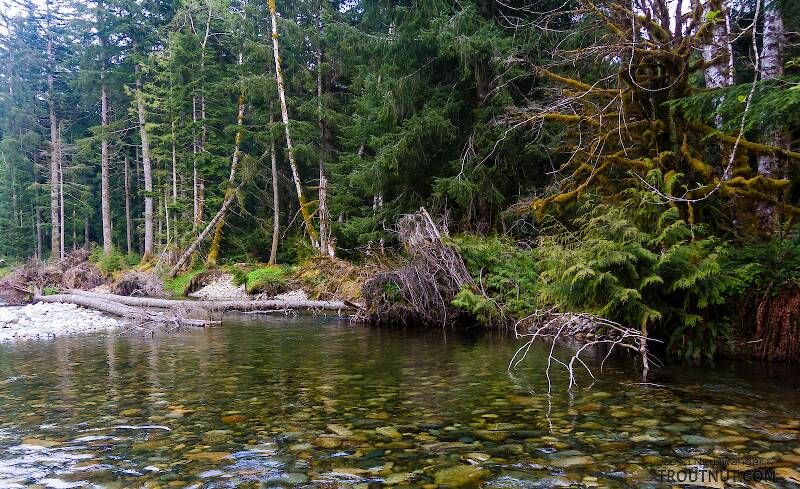
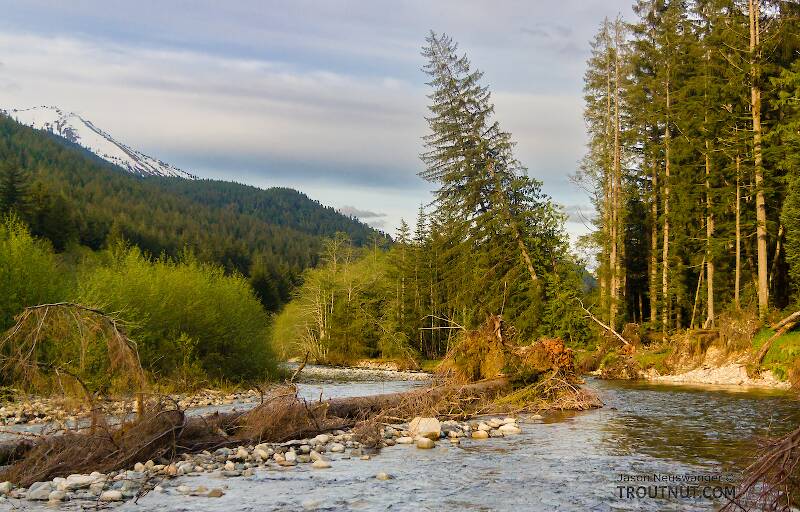
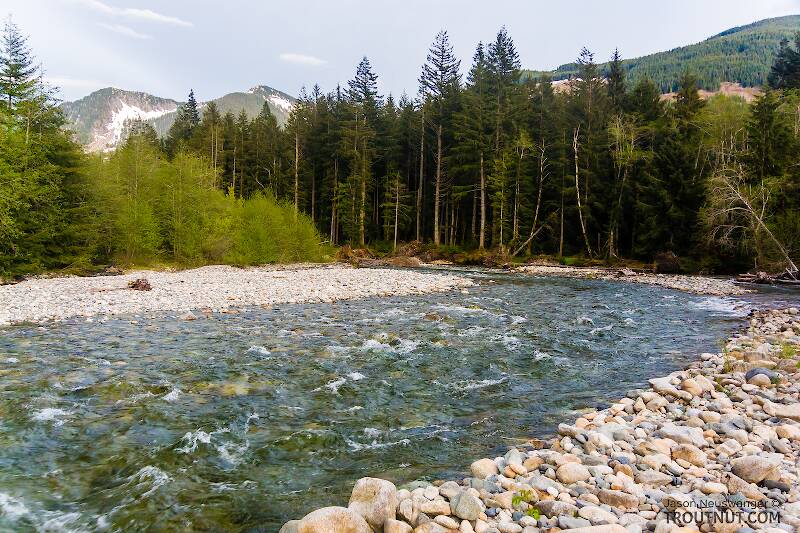
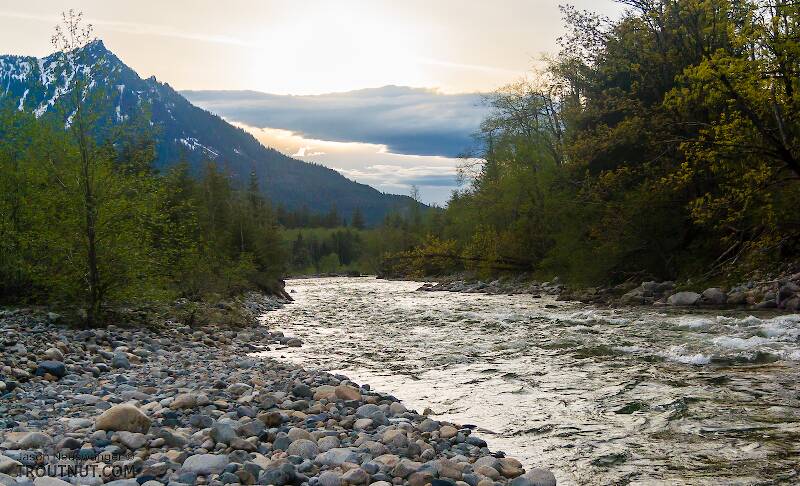
Closeup insects by Troutnut from the South Fork Snoqualmie River in Washington
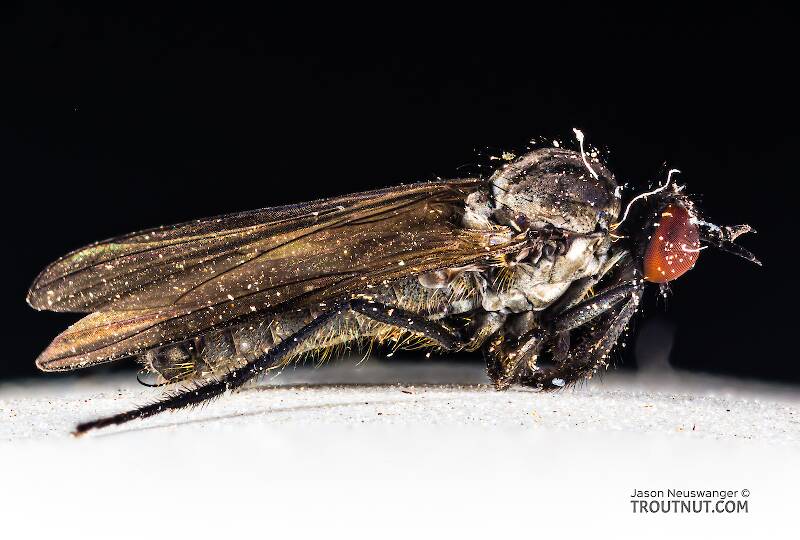
I'm not fully confident in the ID on this one. I couldn't see for sure that there are two equal pads under the tarsal claws instead of three, but it seems that way. The antennae are 4-segmented, although I'm not sure if the last segment counts as a "segment" rather than a style@ or arista sticking off the third segment. It has three ocelli. The key characteristics generally point to Empididae except "Vein R4+5 usually branched." That vein certainly isn't branched in this specimen, but the key does say "usually."
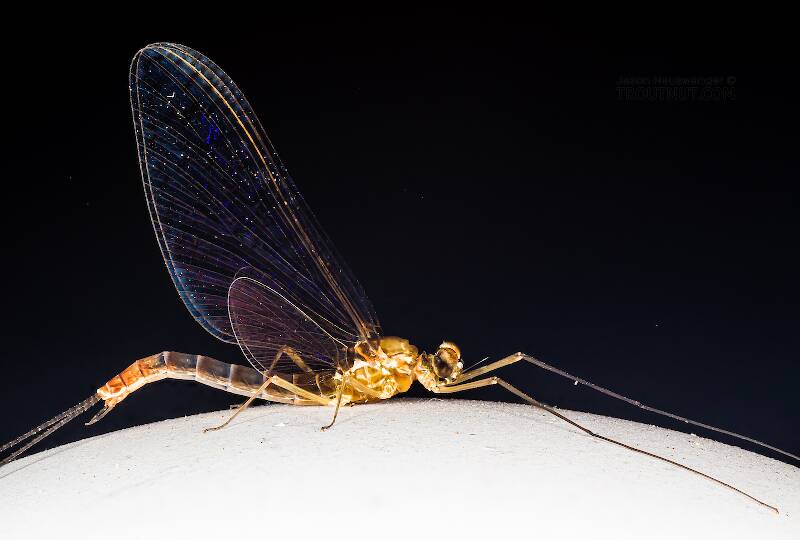
The identification of this specimen is not positive because some of the key characteristics conflict. The uniform amber tint of the wings and the rusty-colored mid-ventral markings on some of the abdominal sternites point to Cinygmula uniformis, but I could not locate the small ventral subapical spines on the penes that are supposed to also diagnose that species (the ones visible in the pictures aren't the ones I'm talking about). If I prioritize that characteristics, this would probably be Cinygmula mimus, but then the wing and sternite shading/markings are wrong.
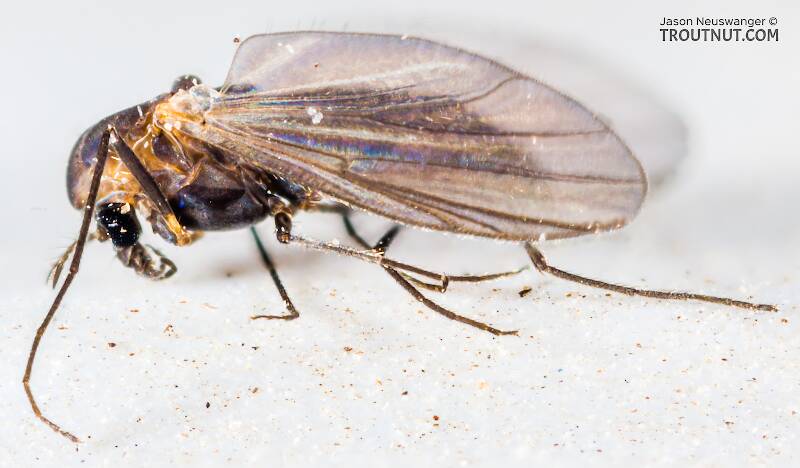
This extremely tiny fly was puzzling to identify. I collected it from a sparse mating swarm just above the surface of the river. It just doesn't have the "look" I'm used to seeing in Chironomids, but the key characteristics in Merritt, Cummins, & Berg point that way.
-Maxillary palp apparently with 4 segments, antenna with 6
-I can't see any ocelli and wing venation doesn't seem to match Axymyiidae
-Costa definitely ends at or near apex of the wing (pictured)
-Obvious characteristics and wing venation rule out a few other things
-Simuliidae seems like a possibility due to the broad wings, but bugguide says they're supposed to have more antennal segments (eleven, though a different source says some have ten, at least in the Southern Hemisphere).
-Postnotum with median longitudinal groove (pictured) rules out Ceratopogonidae
So my guess is some kind of chironomid from a genus that doesn't have the classic midge look. There are some like that.
-Maxillary palp apparently with 4 segments, antenna with 6
-I can't see any ocelli and wing venation doesn't seem to match Axymyiidae
-Costa definitely ends at or near apex of the wing (pictured)
-Obvious characteristics and wing venation rule out a few other things
-Simuliidae seems like a possibility due to the broad wings, but bugguide says they're supposed to have more antennal segments (eleven, though a different source says some have ten, at least in the Southern Hemisphere).
-Postnotum with median longitudinal groove (pictured) rules out Ceratopogonidae
So my guess is some kind of chironomid from a genus that doesn't have the classic midge look. There are some like that.
Proceeds from a hiking trip
By Troutnut on May 13th, 2022
I went for a hike along the South Fork with my wife and dog, then threw on my waders at the parking lot to collect some nymphs before heading home.

